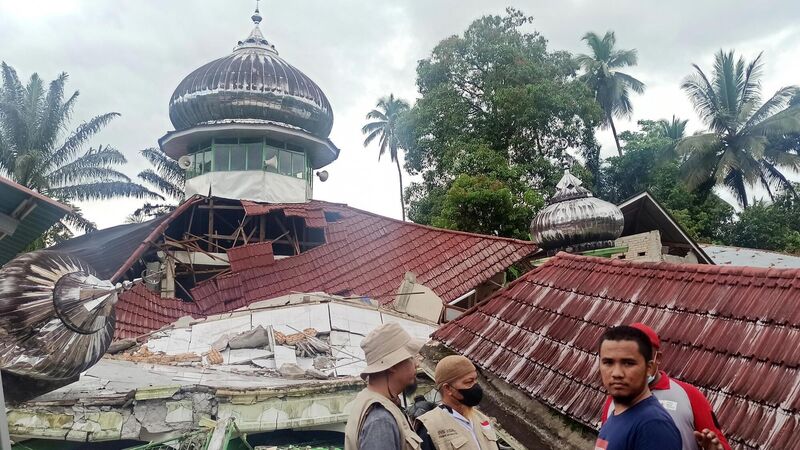Ireland one of the least likely countries in Europe to be impacted by earthquakes

A damaged mosque following an earthquake in Pasaman, West Sumatra, Indonesia, in February. In Ireland's case, earthquakes can have an indirect effect - it suffered significant tsunami damage following a monster earthquake in Portugal in 1755, partially destroying Galway’s Spanish Arch. Photo: AP/Marsulai
A new assessment of earthquakes and their potential devastation across Europe has found that Ireland is one of the safest places to be.
The assessment has found that Ireland comes in lowest when it comes to both "hazard" and "risk". Hazard describes the potential for ground shaking due to earthquakes, while risk describes the impact that can be expected in the aftermath in Europe.









